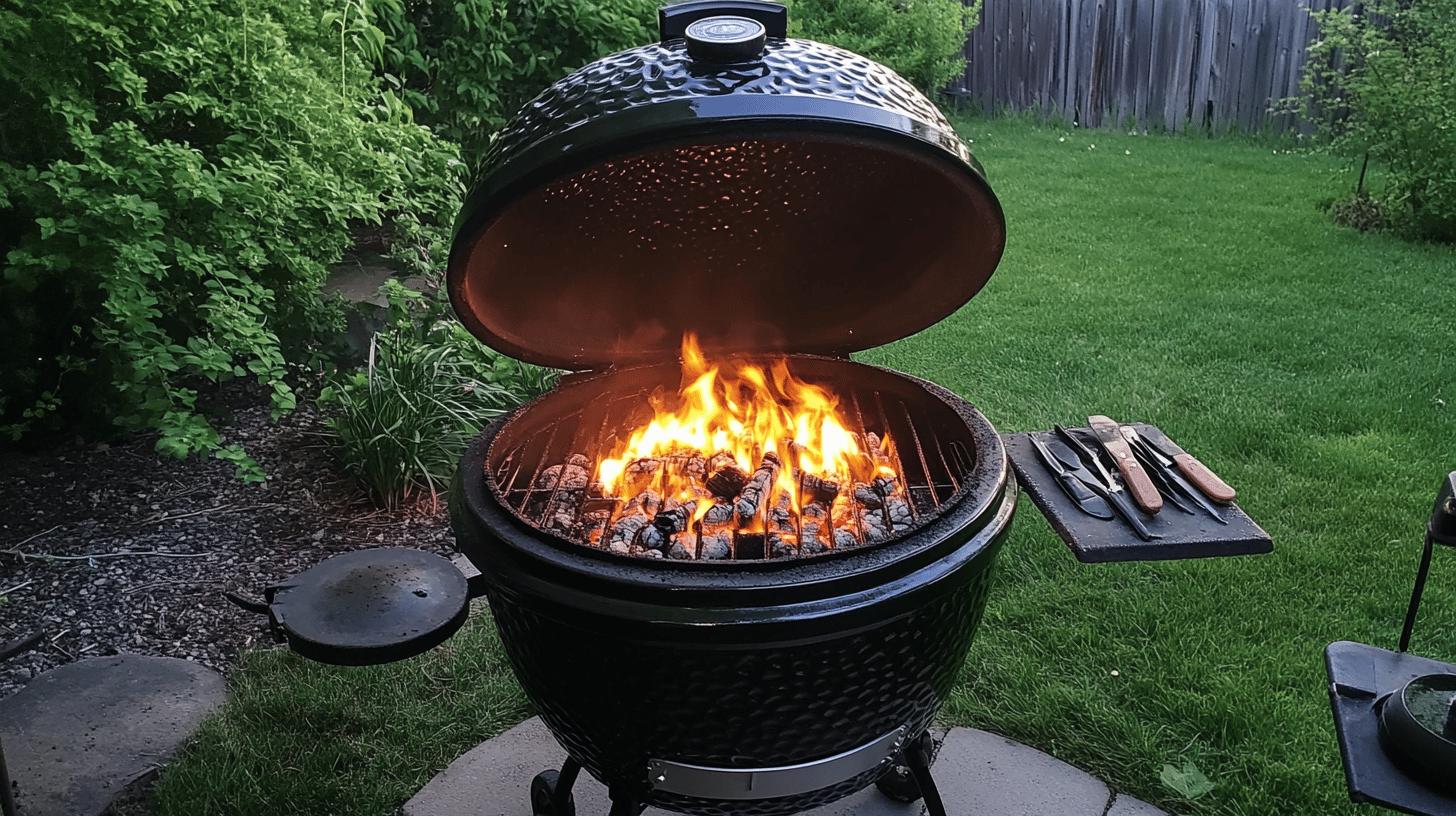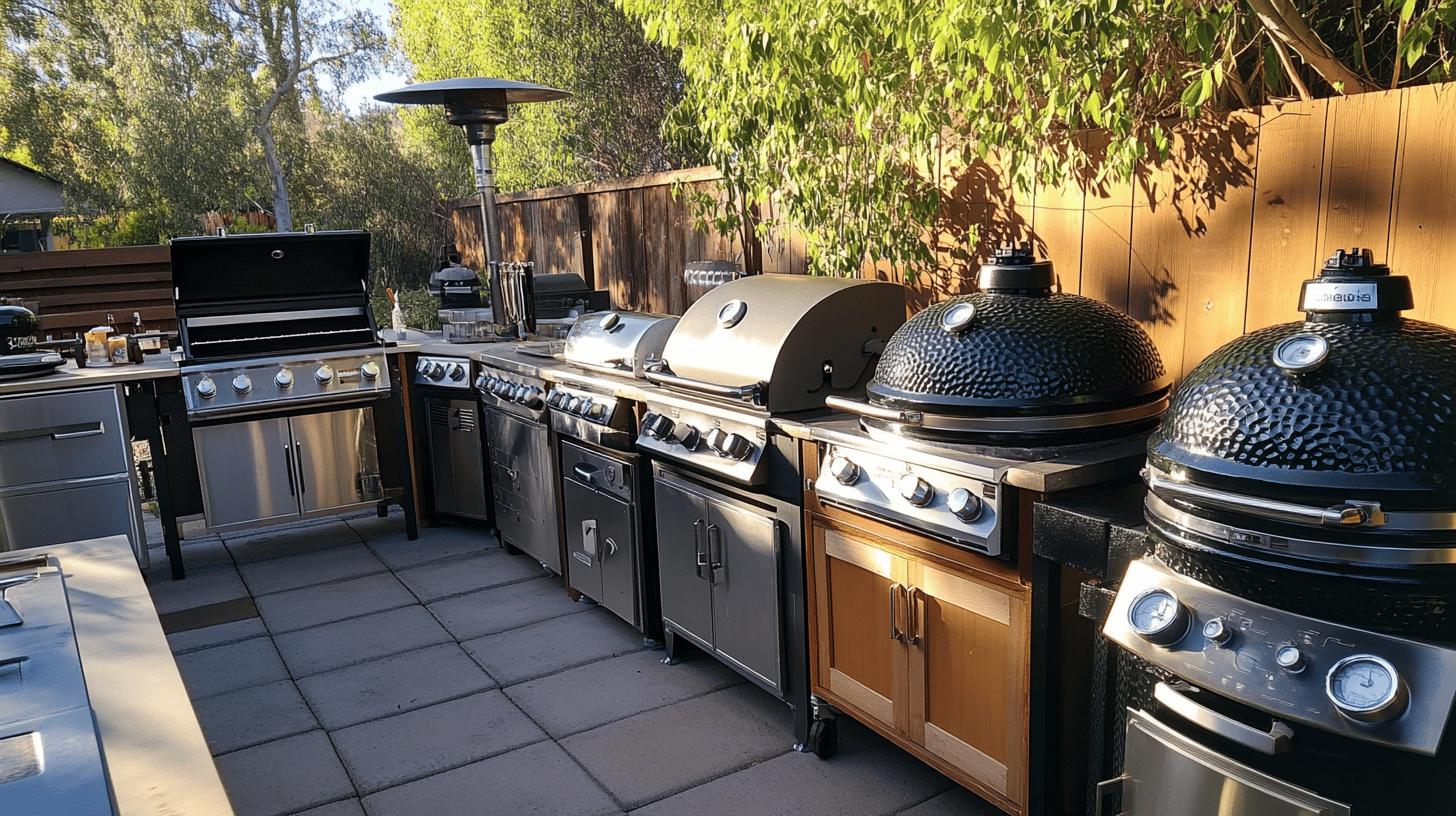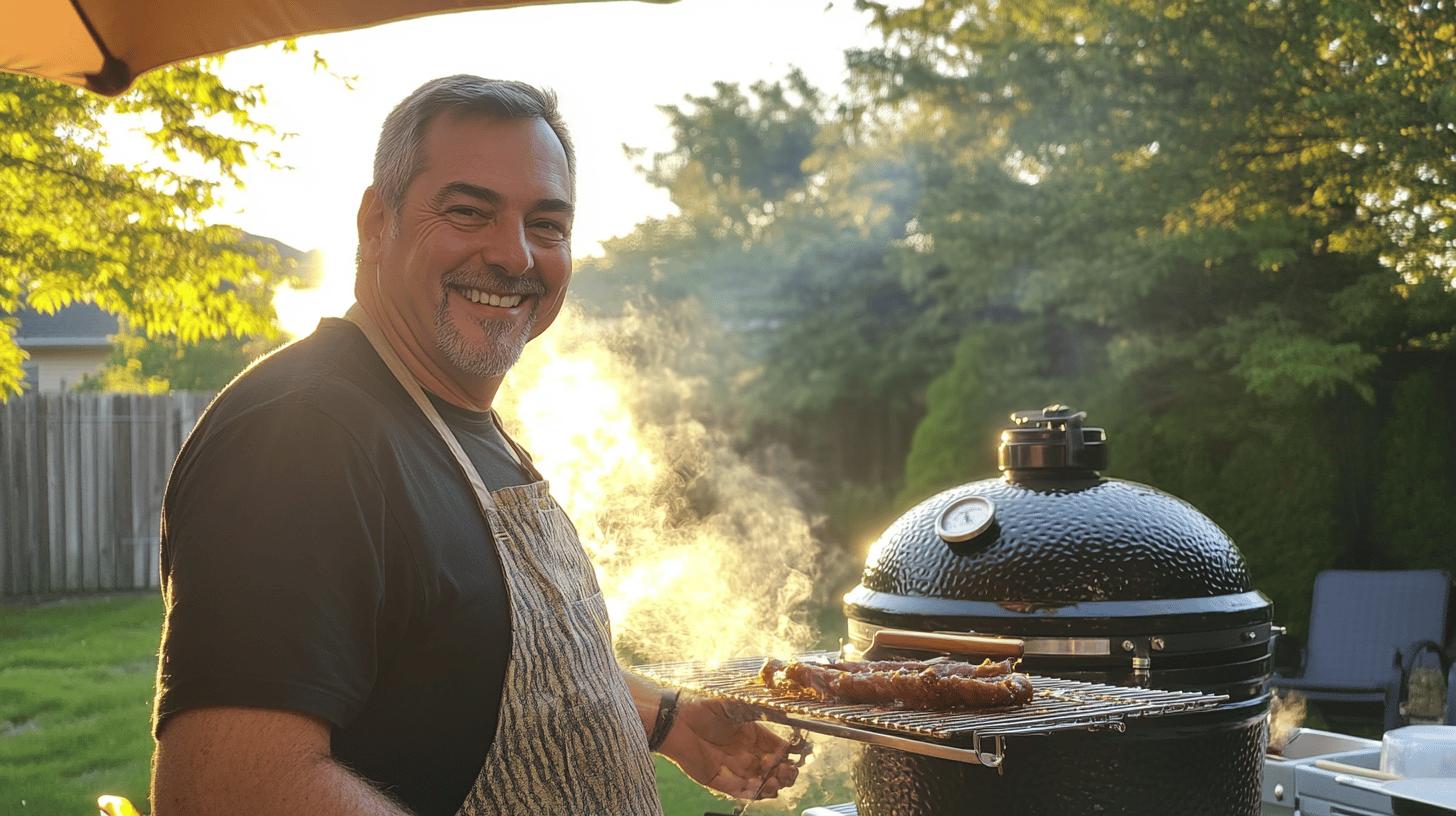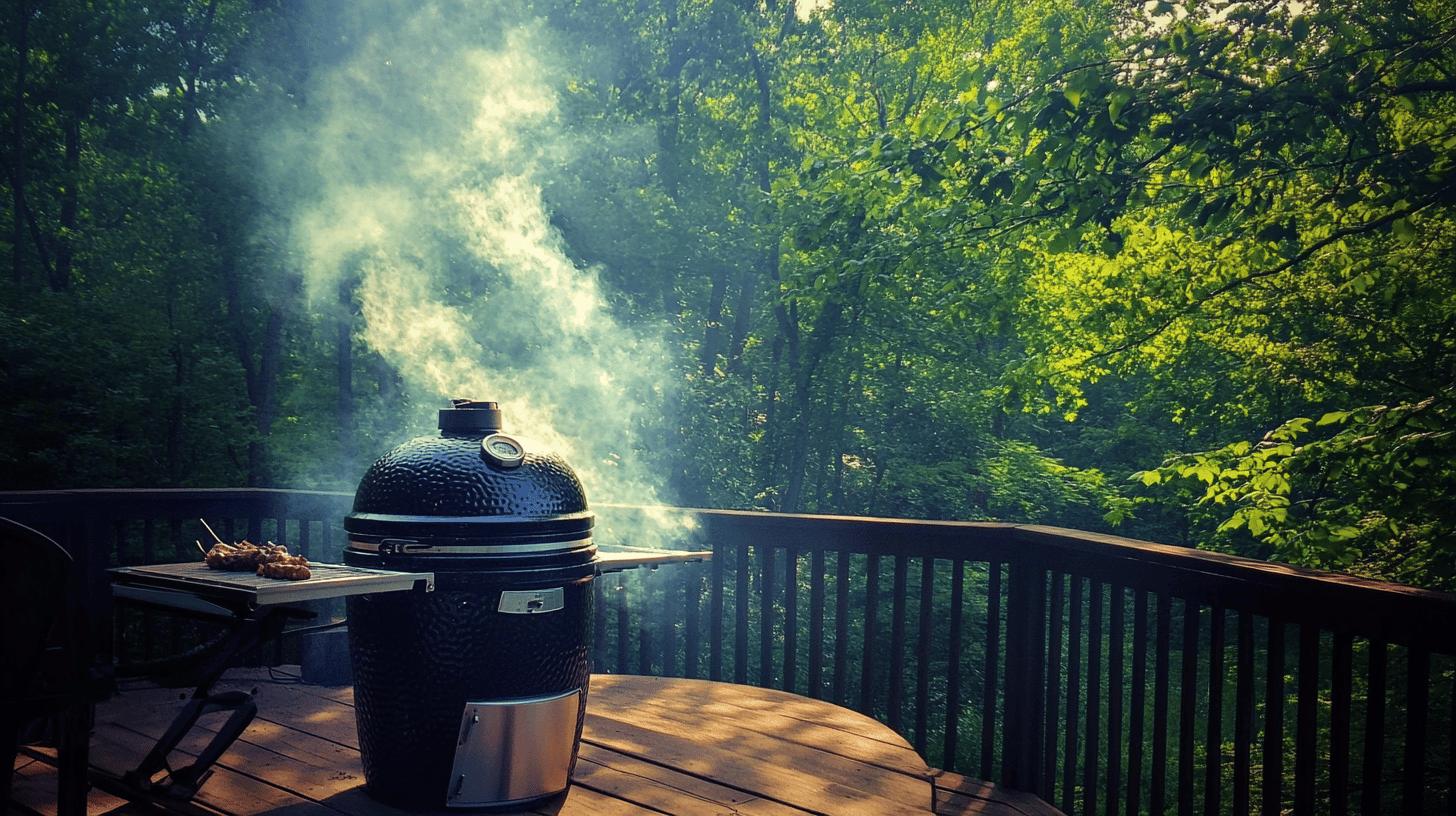Backyard Grilling: Pros and Cons of Kamado Grills
Is your backyard grilling missing that special touch of magic? The secret might just lie in the egg-shaped wonders known as Kamado grills. With their unique design and ceramic construction, these grills are famed for their impeccable temperature control and remarkable durability. Whether you’re a seasoned grillmaster or just venturing into the world of outdoor cooking, deciding if a Kamado grill is right for you requires understanding its pros and cons. Let’s explore how these grilling giants compare in the world of backyard culinary adventures. Ready to fire up those coals? Let’s dive in.
Backyard Grilling: Pros and Cons of Kamado Grills
Kamado grills are generally more expensive than other types, representing a significant investment for serious backyard grilling enthusiasts. The quality of materials and versatility they offer are often reflected in their price, making them a premium choice for those looking to enhance their outdoor cooking experience. While the initial cost may be high, many users find the durability and cooking performance justify the expenditure in the long run.
- Weight and Bulkiness: Kamado grills can be heavy and cumbersome, often weighing between 150 to 300 pounds. This makes them difficult to move and could limit placement options in your backyard.
- Learning Curve: Mastering temperature control and airflow requires practice, especially for beginners. Adjusting vents and maintaining consistent heat can be challenging initially.
- Fragility: Despite being durable, the ceramic construction is susceptible to cracking if mishandled, requiring careful handling during use and transportation.
Beyond the financial aspect, Kamado grills can pose challenges with their weight and learning curve. The bulky design might limit mobility and setup flexibility in your backyard. However, integrating a backyard grilling station can transform your outdoor space into a culinary haven. Imagine having a dedicated area where your Kamado grill sits alongside prep tables, storage, and even a small fridge. This setup not only enhances the aesthetic appeal of your backyard but also maximizes functionality, allowing you to entertain guests with ease while showcasing your grilling prowess. Moreover, newcomers may find it tricky to master the airflow and temperature control necessary for optimal cooking. Despite these hurdles, many backyard chefs appreciate the unique flavor profiles and cooking versatility that Kamado grills bring to the table.
Pros of Kamado Grills for Backyard Grilling

Kamado grills stand out with their exceptional temperature control, a feature that backyard grilling enthusiasts find invaluable. The thick ceramic walls of these grills offer superior heat retention, allowing you to maintain steady temperatures over extended periods. This makes Kamado grills particularly well-suited for slow cooking and smoking, where precise temperature management is crucial. Whether you’re searing a steak or smoking a brisket, these grills provide the consistency needed for optimal results.
One of the most appealing aspects of Kamado grills is their versatility. Unlike traditional grills that may focus on a single cooking method, Kamado grills allow for grilling, smoking, baking, and roasting all in one unit. You can easily transition from cooking a perfect pizza to smoking ribs without needing separate equipment. This multifunctionality makes it a favorite among those who enjoy experimenting with different cooking styles and techniques in their backyard.
The ability to retain moisture and enhance flavor is another standout advantage of Kamado grills. Thanks to their design, these grills capture and circulate smoke and moisture, infusing your food with rich, complex flavors that are hard to replicate with other grill types. The result is food that is not only cooked to perfection but also brimming with a depth of flavor that elevates your backyard grilling experience to new heights.
Cons of Using Kamado Grills in Your Backyard
Kamado grills typically come with a higher price tag compared to other grill types, reflecting their status as a premium choice for backyard cooking enthusiasts. This cost is largely due to their ceramic construction and versatile design, which provides exceptional cooking capabilities. While they are a significant investment, many find the performance and longevity of Kamado grills to be worthwhile over time, especially for those committed to enhancing their outdoor cooking repertoire.
- Weight and Bulkiness: Kamado grills often weigh between 150 to 300 pounds, making them difficult to move and limiting placement options.
- Space Constraints: Their bulky design can take up considerable space, which might not be suitable for smaller backyards.
- Fragility: Despite their durability, the ceramic material can crack if mishandled or dropped.
New users may experience a steep learning curve with Kamado grills, particularly when mastering temperature control and airflow. Adjusting the vents to achieve and maintain the desired temperature requires practice and patience. This aspect can be daunting for beginners but becomes more manageable with experience, rewarding those who invest the time to understand and master these unique grills.
Comparing Kamado Grills with Other Grill Types

When it comes to backyard grilling, the debate between Kamado grills and gas grills is a common one. Kamado grills, with their ceramic construction, excel at heat retention, maintaining consistent temperatures for hours. This makes them ideal for slow cooking and smoking. In contrast, gas grills, typically made from metal, heat up quickly and offer convenience for those who want to start grilling with minimal wait time. While gas grills might win in speed and ease, they often miss out on the rich, smoky flavor that Kamado grills naturally impart to food.
Kamado grills are known for their versatility, capable of grilling, smoking, baking, and roasting. This multifaceted approach allows for a wide range of cooking methods, from searing steaks to baking pizzas. Charcoal grills, while also offering a traditional grilling experience, don’t quite match the Kamado’s ability to retain flavor and moisture. Gas grills, while convenient, generally lack the depth of flavor that charcoal-based methods provide. The ceramic material of Kamado grills circulates heat and smoke efficiently, creating a unique flavor profile that enhances the taste of whatever you’re cooking.
In terms of cost, Kamado grills are usually a greater investment than their gas counterparts. The price reflects their high-quality materials and cooking versatility. Gas grills are often more budget-friendly, making them an attractive option for those who grill occasionally. However, for those who value the superior cooking performance and durability, the higher price of a Kamado grill can be justified. Charcoal grills tend to be cheaper, but they don’t offer the same level of temperature control or versatility as Kamado grills.
| Grill Type | Heat Retention | Flavor Profile | Cost |
|---|---|---|---|
| Kamado | Excellent | Rich, Smoky | High |
| Gas | Moderate | Mild | Moderate to Low |
| Charcoal | Good | Smoky | Low |
Practical Tips for Using Kamado Grills in Your Backyard
Starting a Kamado grill safely and effectively begins with choosing the right fuel. Opt for natural lump charcoal, which burns hotter and cleaner than briquettes. To ignite the grill, use natural firestarters, as they are safer and won’t impart unwanted flavors. Avoid using lighter fluid, which can be absorbed by the ceramic, leaving a lingering taste in your food. Once the charcoal is lit, adjust the vents to control airflow and temperature, a key skill in mastering Kamado grilling.
Maintaining and cleaning your Kamado grill requires a gentle touch. The ceramic material is excellent for heat retention but can be prone to cracking if mishandled. Avoid dropping heavy objects on the grill or using it as a shelf. For cleaning, a simple brush is usually enough to remove food residues. Refrain from using abrasive cleaners or tools that might scratch the ceramic surface. Regularly check the gaskets and seals to ensure they are in good condition, as they are essential for maintaining temperature control.
Experimenting with different cooking methods and flavors can greatly enhance your outdoor cooking experience. Kamado grills are versatile, allowing you to try everything from smoking ribs to baking pizzas. Different types of wood chips can be added to the charcoal for unique smoke flavors, such as apple or hickory. Adjust the vents and temperature settings to explore various cooking techniques, making each grilling session a new culinary adventure.
User Experiences: Testimonials and Expert Opinions on Kamado Grills

Kamado grills have garnered enthusiastic feedback from users who appreciate their superior cooking quality and versatility. Many backyard chefs rave about the rich, smoky flavors these grills impart, which are hard to replicate with other types. The active Big Green Egg community is particularly vocal, sharing an array of recipes and tips that enrich the grilling experience. Users often mention the grills’ ability to maintain consistent temperatures, which is crucial for perfecting slow-cooked dishes.
- Excellent temperature control
- Versatile cooking methods
- Enhanced flavor retention
Expert chefs also hold Kamado grills in high regard, often recommending them for their ability to enhance flavor while maintaining consistent cooking conditions. These grills are praised for their adaptability, making them suitable for a wide range of cooking styles, from searing to smoking. The grilling community values the craftsmanship and performance of Kamado grills, considering them a staple for any serious outdoor cook looking to elevate their grilling game.
Final Words
Exploring the world of Kamado grills reveals a host of compelling advantages and some challenges. From their distinct ceramic design, they offer unparalleled temperature control and versatility, making them a standout choice for backyard grilling. These grills enhance the flavor and moisture of cooked foods while maintaining a high level of efficiency.
Despite their initial cost and learning curve, many enthusiasts find the investment worthwhile for the grilling precision and results. Whether you’re considering the pros and cons of Kamado grills, their unique capabilities can elevate your backyard cooking experience into something truly special.
FAQ
Do kamado grills get hot on the outside?
Kamado grills do retain heat efficiently, so the exterior can become quite warm during cooking, though not as intensely hot as the interior. It’s always wise to exercise caution and avoid direct contact with the grill’s surface while cooking.
Can you use a kamado as a normal barbecue?
Yes, you can use a kamado as a normal barbecue. Kamado grills excel in versatility, allowing you to grill, smoke, bake, and roast, offering the unique ability to switch between conventional and more specialized cooking styles.
How long do kamado grills last?
Kamado grills are known for their durability; many can last upwards of 10 years with proper care. Their ceramic construction is robust, supporting longevity that surpasses many other grill types.
What are the advantages of a kamado grill?
The advantages of a kamado grill include exceptional temperature control, versatile cooking methods, and the ability to maintain moisture and flavor. These features make them ideal for both beginners and seasoned grill enthusiasts seeking rich, flavorful results.






